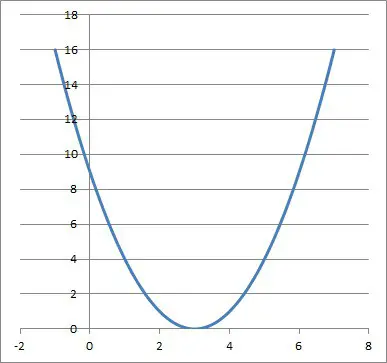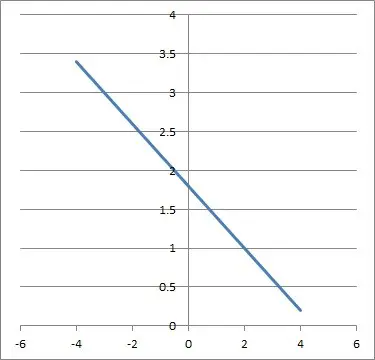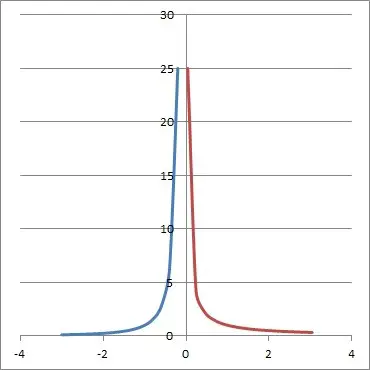Limits are used in calculus to find the derivative of a function. It is important to know what values they can take on and what to look for as an indication of these values.
So, can a limit be zero, negative, or infinity? A limit can be zero, negative, or infinity in some cases, depending on the context. To find these limits for rational functions, we need to compare the numerator and denominator as they approach a limit value. An indeterminate limit can have a value that is zero, negative, or infinity.
Of course, limits can also be undefined in certain situations (such as when the left and right hand limits do not agree).
In this article, we’ll talk about how limits can be zero, negative, or infinity. We’ll also go over some examples to make the concepts clear.
Let’s get started.
Can A Limit Be Zero?
A limit can be zero in several different cases:
- When substituting the limit value into the function gives a result of zero.
- When substituting the limit value into the function gives a zero numerator and a nonzero denominator.
- When substituting the limit value into the function gives a finite numerator and an infinite denominator.
- When an indeterminate form (0/0 or infinity/infinity) reduces to zero (using L’Hopital’s Rule).

Let’s take a look at examples of each case.
Example 1: A Limit Of Zero
Consider the function f(x) = 4x – 12. We want to calculate the limit of f(x) as x approaches 3.
In this case, we can just substitute the limit value into the function to get:
- limx–>3f(x)
- =limx–>3(4x – 12) [f(x) = 4x – 12]
- =4(3) – 12 [substitute x = 3]
- =12 – 12
- =0
So, we get a limit of zero for f(x) as x approaches 3.
Example 2: A Limit Of Zero
Consider the function f(x) = (x – 4) / (x + 2). We want to calculate the limit of f(x) as x approaches 4.
In this case, we can just substitute the limit value into the function to get:
- limx–>4f(x)
- =limx–>4((x – 4)/(x + 2)) [f(x) = (x – 4)/(x + 2)]
- =((4 – 4)/(4 + 2)) [substitute x = 4]
- =0 / 6
- =0
So, we get a limit of zero for f(x) as x approaches 4, due to a zero numerator and a nonzero denominator.
Example 3: A Limit Of Zero
Consider the function f(x) = (x + 3) / (1 / x). We want to calculate the limit of f(x) as x approaches 0.
In this case, we can just substitute the limit value into the function to get:
- limx–>0f(x)
- =limx–>0((x + 3)/(1/x) [f(x) = (x + 3) /(1/x)]
- =((0 + 3)/(1/0) [substitute x = 0]
- =3 / (1/0)
- =0
Now, 1/0 is either positive or negative infinity (depending on the direction we approach zero from). However, the limit will still be zero, regardless of whether the denominator is positive or negative infinity.
So, we get a limit of zero for f(x) as x approaches 0, due to a nonzero numerator and an infinite denominator.
Example 4: A Limit Of Zero From The Indeterminate Form 0/0
Consider the function f(x) = x2 / x. We want to calculate the limit of f(x) as x approaches 0.
In this case, we can just substitute the limit value into the function to get:
- limx–>0f(x)
- =limx–>0(x2)/(x) [f(x) = x2/x ]
- =02/0 [substitute x = 0]
- =0 / 0 [indeterminate form 0/0]
Since we have the indeterminate form 0/0, we need to use L’Hopital’s Rule to help us resolve the limit. Remember, L’Hopital’s Rule tells us that if we get an indeterminate form from
- limx–>af(x)/g(x)
then the limit is equivalent to:
- limx–>af’(x)/g’(x)
That is, we take the derivative of the numerator and denominator separately and compare their limits to see which one is growing faster.
Here, our functions are f(x) = x2 (numerator) and g(x) = x (denominator). Taking the derivatives, we get f’(x) = 2x and g’(x) = 1.
Applying L’Hopital’s Rule, we get:
- limx–>af(x)/g(x)
- =limx–>af’(x)/g’(x)
- =limx–>0(2x/1)
- =2(0) / 1
- =0 / 1
- =0
So, we get a limit of zero for f(x) as x approaches 0, due to a zero numerator and a nonzero denominator after resolving with L’Hopital’s Rule.
Example 5: A Limit Of Zero From The Indeterminate Form Infinity/Infinity
Consider the function f(x) = (x-2 + 4) / (x-3 + 5). We want to calculate the limit of f(x) as x approaches 0.
In this case, we can just substitute the limit value into the function to get:
- limx–>0f(x)
- =limx–>0(x-2 + 4)/(x-3 + 5) [f(x) = (x-2 + 4) / (x-3 + 5)]
- =(0-2 + 4) / (0-3 + 5) [substitute x = 0]
- =infinity / infinity [indeterminate form infinity/infinity]
Since we have the indeterminate form infinity/infinity, we need to use L’Hopital’s Rule to help us resolve the limit.
Here, our functions are f(x) = x-2 + 4 (numerator) and g(x) = x-3 + 5 (denominator). Taking the derivatives, we get f’(x) = -2x-3 and g’(x) = -3x-4.
Applying L’Hopital’s Rule, we get:
- limx–>af(x)/g(x)
- =limx–>af’(x)/g’(x)
- =limx–>0(-2x-3 / -3x-4)
- =limx–>0(2x-3 / 3x-4)
- =limx–>0(2x/ 3)
- =2(0) / 3
- =0/3
- 0
So, we get a limit of zero for f(x) as x approaches 0, due to a zero numerator and a nonzero denominator after resolving with L’Hopital’s Rule.
Can A Limit Be Negative?
Limits can be negative, since limits are not restricted to positive values. A limit can be negative in several different cases:
- When substituting the limit value into the function gives a negative result.
- When substituting the limit value into the function gives a numerator and denominator with opposite signs.
- When an indeterminate form (0/0 or infinity/infinity) reduces to a negative value (using L’Hopital’s Rule).

Let’s take a look at examples of each case.
Example 1: A Negative Limit
Consider the function f(x) = 2x – 7. We want to calculate the limit of f(x) as x approaches 3.
In this case, we can just substitute the limit value into the function to get:
- limx–>3f(x)
- =limx–>3(2x – 7) [f(x) = 2x – 7]
- =2(3) – 7 [substitute x = 3]
- =6 – 7
- =-1
So, we get a negative limit (specifically, -1) for f(x) as x approaches 3.
Example 2: A Negative Limit
Consider the function f(x) = (x – 4) / (x – 8). We want to calculate the limit of f(x) as x approaches 6.
In this case, we can just substitute the limit value into the function to get:
- limx–>6f(x)
- =limx–>6((x – 4)/(x – 8)) [f(x) = (x – 4)/(x – 8)]
- =((6 – 4)/(6 – 8)) [substitute x = 6]
- =2 / -2
- =-1
So, we get a negative limit (specifically, -1) for f(x) as x approaches 6, since the numerator and denominator have opposite signs.
Example 3: A Negative Limit From The Indeterminate Form 0/0
Consider the function f(x) = (x2 – 4) / (2 – x). We want to calculate the limit of f(x) as x approaches 2.
In this case, we can just substitute the limit value into the function to get:
- limx–>2f(x)
- =limx–>2(x2 – 4)/(2 – x) [f(x) = (x2 – 4) / (2 – x)]
- (22 – 4)/(2 – 2) [substitute x = 2]
- =0 / 0 [indeterminate form 0/0]
Since we have the indeterminate form 0/0, we need to use L’Hopital’s Rule to help us resolve the limit.
Here, our functions are f(x) = x2 – 4 (numerator) and g(x) = 2 – x (denominator). Taking the derivatives, we get f’(x) = 2x and g’(x) = -1.
Applying L’Hopital’s Rule, we get:
- limx–>af(x)/g(x)
- =limx–>af’(x)/g’(x)
- =limx–>2(2x/-1)
- =limx–>2(-2x)
- =-2(2)
- =-4
So, we get a negative limit (specifically, -4) for f(x) as x approaches 2, due to a numerator and denominator with different signs after resolving with L’Hopital’s Rule.
Example 4: A Negative Limit From The Indeterminate Form Infinity/Infinity
Consider the function f(x) = (x-2 + 6) / (3 – x-2). We want to calculate the limit of f(x) as x approaches 0.
In this case, we can just substitute the limit value into the function to get:
- limx–>0f(x)
- =limx–>0(x-2 + 6)/(3 – x-2) [f(x) = (x-2 + 6) / (3 – x-2)]
- =(0-2 + 6) / (3 – 0-2) [substitute x = 0]
- =infinity / infinity [indeterminate form infinity/infinity]
Since we have the indeterminate form infinity/infinity, we need to use L’Hopital’s Rule to help us resolve the limit.
Here, our functions are f(x) = x-2 + 6 (numerator) and g(x) = 3 – x-2 (denominator). Taking the derivatives, we get f’(x) = -2x-3 and g’(x) = 2x-3.
Applying L’Hopital’s Rule, we get:
- limx–>af(x)/g(x)
- =limx–>af’(x)/g’(x)
- =limx–>0(-2x-3 / 2x-3)
- =limx–>0(-1)
- =-1
So, we get a negative limit (specifically, -1) for f(x) as x approaches 0, due to a numerator and denominator with different signs after resolving with L’Hopital’s Rule.
Can A Limit Be Infinity?
Limits can be infinity, since limits are not restricted to finite values. A limit can be infinite in several different cases:
- When substituting the limit value into the function gives infinity.
- When substituting the limit value into the function gives a finite numerator and a zero denominator.
- When an indeterminate form (0/0 or infinity/infinity) reduces to infinity (using L’Hopital’s Rule).

Let’s take a look at examples of each case.
Example 1: A Limit Of Infinity
Consider the function f(x) = x + 6. We want to calculate the limit of f(x) as x approaches infinity.
In this case, we can just substitute the limit value into the function to get:
- limx–>infinityf(x)
- =limx–>infinity(x + 6) [f(x) = x + 6]
- =infinity
So, we get a limit of infinity for f(x) as x approaches infinity.
Example 2: A Limit Of Infinity
Consider the function f(x) = 1 / x2 We want to calculate the limit of f(x) as x approaches 0.
In this case, we can just substitute the limit value into the function to get:
- limx–>0f(x)
- =limx–>0(1/x2) [f(x) = 1/x2]
- =1/02 [substitute x = 0]
- infinity
So, we get a limit of infinity for f(x) as x approaches 0, due to a finite numerator and a zero denominator.
Example 3: A Limit Of Infinity From The Indeterminate Form 0/0
Consider the function f(x) = (x – 2) / (x2 – 4x + 4). We want to calculate the limit of f(x) as x approaches 2.
In this case, we can just substitute the limit value into the function to get:
- limx–>2f(x)
- =limx–>2(x – 2)/(x2 – 4x + 4) [f(x) = (x – 2) / (x2 – 4x + 4)]
- =(2 – 2) / (22 – 4(2) + 4) [substitute x = 2]
- =0 / 0
Since we have the indeterminate form 0/0, we need to use L’Hopital’s Rule to help us resolve the limit.
Here, our functions are f(x) = x – 2 (numerator) and g(x) = x2 – 4x + 4 (denominator). Taking the derivatives, we get f’(x) = 1 and g’(x) = 2x – 4.
Applying L’Hopital’s Rule, we get:
- limx–>af(x)/g(x)
- =limx–>af’(x)/g’(x)
- =limx–>2(-1/(2x – 4))
- =-1/(2(2) – 4)
- =-1/0
- =infinity
So, we get a limit of infinity for f(x) as x approaches 2, due to a nonzero numerator and a zero denominator after resolving with L’Hopital’s Rule.
Example 4: A Limit Of Infinity From The Indeterminate Form Infinity/Infinity
Consider the function f(x) = (x-3 + 5) / (x-2 + 4). We want to calculate the limit of f(x) as x approaches 0.
In this case, we can just substitute the limit value into the function to get:
- limx–>0f(x)
- =limx–>0(x-3 + 5)/(x-2 + 4) [f(x) = (x-3 + 5) / (x-2 + 4)]
- =(0-3 + 5) / (0-2 + 4) [substitute x = 0]
- =infinity / infinity [indeterminate form infinity/infinity]
Since we have the indeterminate form infinity/infinity, we need to use L’Hopital’s Rule to help us resolve the limit.
Here, our functions are f(x) = x-3 + 5 (numerator) and g(x) = x-2 + 4 (denominator). Taking the derivatives, we get f’(x) = -3x-4 and g’(x) = -2x-3.
Applying L’Hopital’s Rule, we get:
- limx–>af(x)/g(x)
- =limx–>af’(x)/g’(x)
- =limx–>0(-3x-4 / -2x-3)
- =limx–>0(3x-4 / 2x-3)
- =limx–>0(3/ 2x)
- =2 / 3(0)
- =2/0
- infinity
So, we get a limit of infinity for f(x) as x approaches 0, due to a nonzero numerator and a zero denominator after resolving with L’Hopital’s Rule.
Conclusion
Now you know when a limit can be zero, negative, or infinity. You also know how to resolve an indeterminate form 0/0 or infinity/infinity using L’Hopital’s Rule.
You can learn about cases when the limit does not exist in my article here.
You can learn more about slope in this article.
I hope you found this article helpful. If so, please share it with someone who can use the information.
Don’t forget to subscribe to my YouTube channel & get updates on new math videos!
~Jonathon

